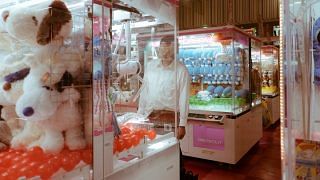
Call it the third wave of tea if you will, today, the traditional brew is no longer consumed by your parents’ generation or as a quotidian coffee shop drink. In recent years, there has been a slew of independent outfits, restaurateurs and foreign players getting onto the tea scene.
Kenny Leong, a tea consultant and freelance writer, credits the rise in visibility to TWG Tea, the Singapore-based success story that first came onto the luxury tea scene in 2008, but has since expanded to more than a dozen territories globally. With its savvy blend of marketing and design – tin canisters recall that of Old World trade products and cafes done up like English tea rooms – the brand modernised tea drinking and made it into a lifestyle.

Since then, there’s been a glut of brands entering the market. Juan Tea, Antea Social and Camellia are the newbies, all launched within the last year (and to be available online next month: Kindred Teas), with each putting its own spin on the brew.
Some focus on the health aspect. Camellia, helmed by Yau Nga Kwan, specialises in loose leaf black and oolong tea sourced from farms in the Wuyi Mountain region. According to Afrose Parveen, a nutritionist with Eat Right Nutrition Consultancy, loose leaves contain higher concentrations of catechin – a plant-based antioxidant that’s been linked to lower risks of heart disease, cancer and diabetes – than tea bags.
Yau says tea should be enjoyed in its natural form, so there shouldn’t be any artificial enhancers that could eventually put a strain on health. It’s the same no-additives approach that’s favoured by Tan Geok Kuan, co-founder of Juan Tea, whose fruity blends are produced using a patented technique to extract the fruits’ essence at room temperature, ensuring that enzymes are not lost to heat (read: customers will get the most benefits out of their drink).
Others take a more creative, aesthetically driven route. Madelene Poon’s blooming tea balls, made from dried tea leaves bounded around a flower, for her label Kindred Teas are GIF-worthy, blossoming slowly when steeped in hot water. She has even developing her own range of wares to complement her flowering tea – expect Kinfolk-pretty glass tumblers, and gold tea spoons and infusers.
Equally hipster-chic is Looksee Looksee, the latest Wes Anderson-esque hangout opened by The Lo & Behold Group last August. Intended as both a public reading room (complete with design books selected by Singapore’s top creatives) and a tea salon, it approached A.muse Projects to curate its tea programme.
Says Wee Teng Wen, managing partner of The Lo & Behold Group: “Tea is often ignored or underrated. But when we met with A.muse Projects, we were completely blown away by the level of dedication and understanding they had of the beverage, and really wanted to give them a platform to showcase the amazing work that they did.”
One of the earliest names to emerge on the small-batch independent scene in 2013, A.muse Projects was started by Angela Phua and is known for offbeat concoctions such as its wine- and alcohol-inspired blends. That creativity manifests itself in the menu that changes monthly at Looksee Looksee. Recent novelties include pairings of tea with chocolate… and cheese.
Yes, cheese. In an interview with Forbes, New York-based tea consultant Rachel Safko says: “The fatty, creamy umami that most of us go bonkers for in cheese helps round out the bite of more astringent teas. What’s new – and makes it all so intriguing – are the thousands of different teas and cheeses pairings you can try these days.”
Unorthodox and unconventional takes on the age-old brew seem to be the way forward. Popular Australian tea label T2 opened a store at 313@Somerset in January this year, carrying more than 150 types of tea. The outlet (T2’s first in Asia) also houses the Singapore Breakfast tea, a blend of pu-erh, coconut and pandan, inspired by a star favourite in our local breakfasts: kaya toast.
T2’s not the only Aussie company muscling in on the game. Taking it up a notch is Australian Tea Masters, a tea education and consultancy firm that set up a local office last February. It staged Singapore’s inaugural Tea Masters Cup two months ago, where participants competed in categories of preparation, pairing and tasting, with the winners of the local competition going on to compete in an international tournament.
The fever has spilled over into the food and beverage industry too. “We are seeing more and more chefs, coffee baristas, wine sommeliers and mixologists expanding their interest and skill sets into tea,” says Julie Wang, Australian Tea Masters’ training director.
“This is evident in F&B establishments, where more attention is now being placed on tea because these professionals realise that experiencing good tea is important and complementary to the overall dining experience.”
Colour Wang’s observations right. The recent Singapore Cocktail Festival saw stylish players like Oasia Hotel’s Cin Cin bar proffering tea-infused gins, while at Parkview Square’s Art Deco-styled Atlas bar (which opened in March to much hurrah), a dedicated tea menu that was designed in tandem with Australian Tea Masters is being served.
Jason Tan, co-owner and head chef of the one-Michelin-starred Corner House at the Botanic Gardens, even has a signature dish made using tea. “The Onion Revealed” is composed of Cevenne onions presented four ways, one of which is an onion confit spiked with Earl Grey-infused onion tea.
And while tea is a simple staple at Chinese restaurants, the revamped Jiang-Nan Chun at the Four Seasons Hotel specially pairs its dishes with an extensive list of teas that aren’t your average oolong (think white peony and pu-erh teas that have been aged for eight years).
These new developments in tea culture, coupled with the consumer movement towards whole foods and organic products, have made the once humble beverage an “It drink”. Eve Persak, resident nutritionist at COMO Shambhala Estate and Shambhala Urban Escape, adds that it’s a low-calorie beverage that offers significant health advantages with little drawbacks. Now, who wouldn’t mind having a taste of that?
Photography Zaphs Zhang Art Direction Adeline Eng Vintage Photo Getty Images
This story first appeared in Female’s May 2017 issue.
Like this? Check out the best pizza places in Singapore for a slice of Italy, the best bars to satisfy your cravings for gin tonic in Singapore and all you need to know about Asia’s first all quinoa company, Superlife & co.















